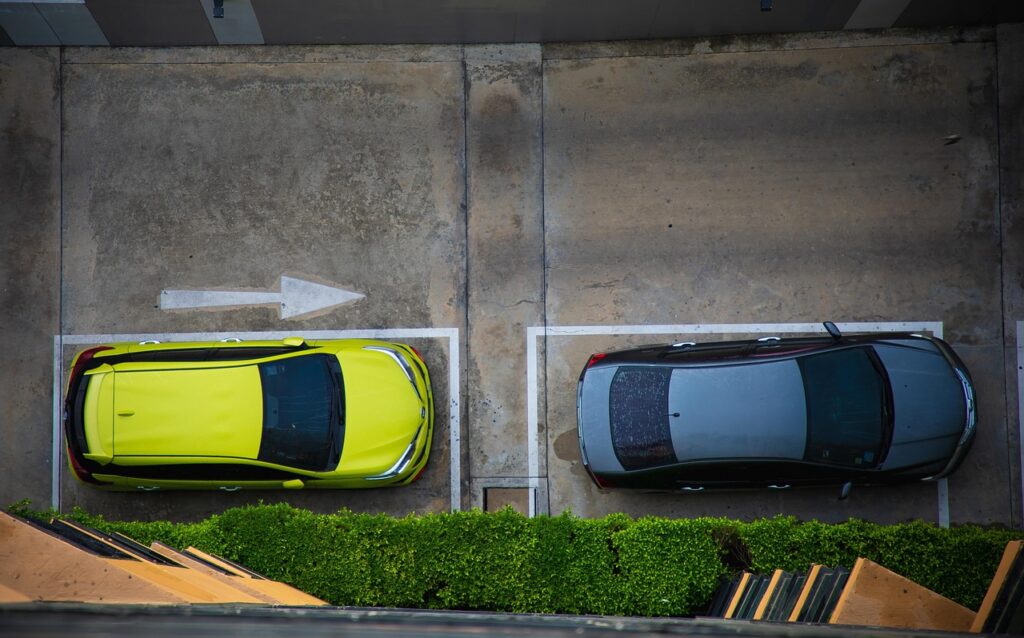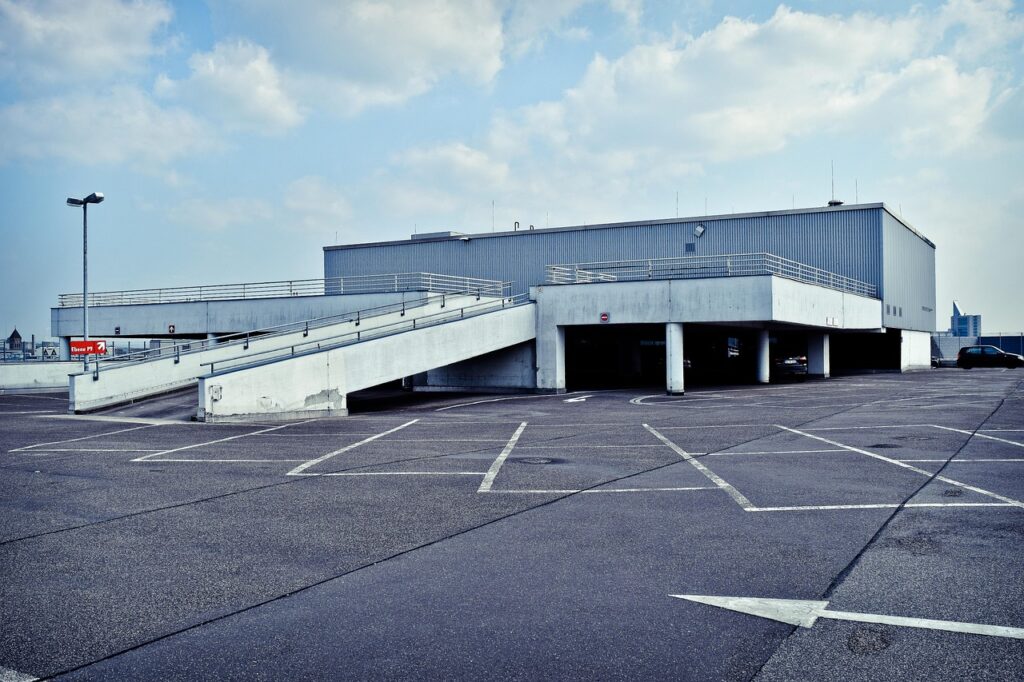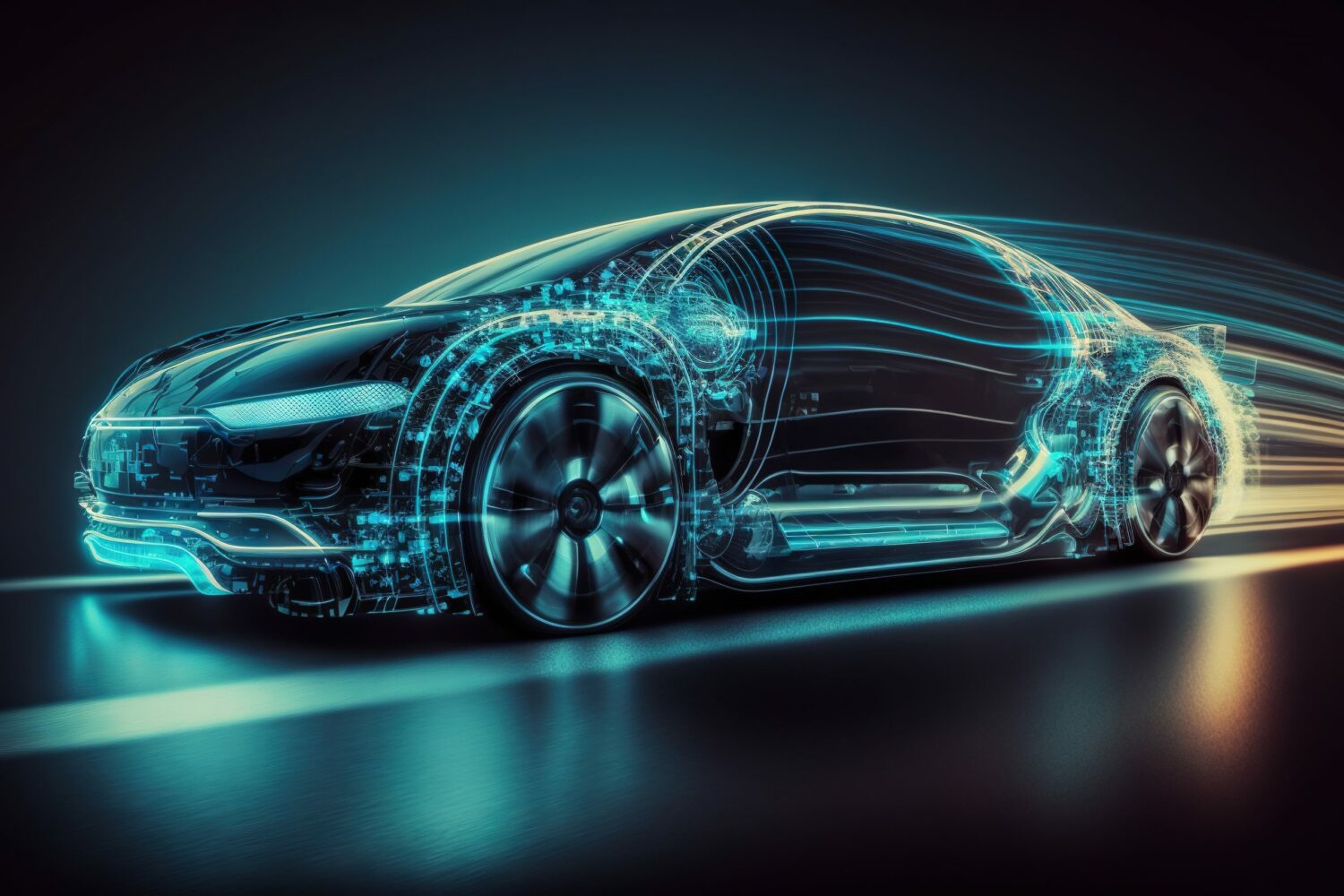
Navigating the maze of a crowded parking lot is a common yet often perilous aspect of daily driving. From bustling shopping centers to workplace facilities, these spaces are frequently challenges filled with frustration, potential road rage, and, unfortunately, a significant risk of accidents. Indeed, the California Highway Patrol (CHP) reports that the most common type of vehicle accident is a backing accident. The National Safety Council further underscores this concern, stating that backing collisions cause over 500 deaths and 15,000 injuries per year. These statistics highlight a pressing need for drivers to adopt rigorous safety practices, especially when reversing their vehicles, which inherently involves increased blind spots and limited vision.
Our objective here is to equip you with practical, actionable advice, empowering you to move through these congested areas with enhanced safety and confidence. We will delve into established guidelines and best practices, drawing on thorough research and expert recommendations, all designed to mitigate the risks associated with backing up. By understanding and implementing these strategies, you can significantly reduce the likelihood of collisions with other vehicles, fixed objects, or, most critically, pedestrians. This comprehensive guide prioritizes your well-being and the safety of those around you, providing clear, easy-to-understand insights that can be directly applied in real-world scenarios.
Embracing a proactive approach to parking lot safety goes beyond merely avoiding a traffic ticket; it’s about cultivating a mindset that prioritizes caution and awareness. The information presented aims to foster better driving habits, ensuring that every maneuver, particularly reversing, is executed with maximum deliberation and control. It’s about transforming a routine, often overlooked, action into a mindful safety practice that protects everyone sharing the parking environment.
1. **Prioritize Patience and Deliberation**One of the most crucial elements for ensuring safety in any crowded parking lot is the cultivation of patience. Rushing through the process of finding a space or executing a maneuver can quickly lead to stress and panic. These heightened emotional states can, in turn, prompt drivers to become enraged, drive erratically, or take unnecessary risks, all of which significantly increase the probability of an accident occurring. Maintaining a calm and collected demeanor allows for better emotional control and facilitates the making of informed, safer decisions.
Applying this patience specifically to the act of backing up means proceeding with deliberate slowness. The context unequivocally states that while backing is the most common type of vehicle accident, speed is the most common cause of accidents overall. Therefore, when reversing, ensuring that you do so slowly is paramount. This measured approach reduces the likelihood of crashing into a car you didn’t see, or that didn’t see you, and critically, of striking a pedestrian who might be passing behind your vehicle as you attempt to move out of a space. Taking your time provides crucial seconds for observation and reaction.
Driving slowly allows you ample opportunity to process your surroundings and adjust to any sudden changes. This deliberate pace is not merely about obeying a general rule; it is a direct mechanism for reducing collision risks. It helps you stay safe by giving you the necessary time to react to unexpected movements from other vehicles or pedestrians. In the dynamic environment of a busy parking lot, this control over your speed is an indispensable safety asset, preventing costly damage and potential injuries.

2. **Adhere to Posted Speed Limits**Beyond the specific act of backing, overall adherence to posted speed limits within the confines of a crowded parking lot is a fundamental safety imperative. These limits are established to govern traffic flow and ensure pedestrian safety in areas with high interaction between vehicles and people. Driving too fast through these thoroughfares can leave you susceptible to a range of accidents, from colliding with cars that back out suddenly to striking pedestrians who are often focused on their destinations rather than approaching vehicles.
Observing the designated speed limits provides you with a critical advantage: the ability to come to an instant stop when faced with an imminent collision. In a bustling environment where unexpected movements are common, this reaction time is invaluable. It enables you to avoid potential impacts with vehicles unexpectedly exiting a space or with individuals stepping out from between parked cars, eager to enter a shopping mall or building. The slower speed buys you precious moments to identify and respond to hazards.
Furthermore, maintaining a consistent, low speed communicates a sense of predictability to other drivers and pedestrians. It reduces the element of surprise that often contributes to accidents in congested areas. By driving within the posted limits, you are not only protecting yourself but also contributing to a safer, more orderly environment for everyone else sharing the parking lot. This simple practice underpins a broader commitment to collective safety and responsible driving behavior.
Read more about: The Hidden Hazards: 12 Common Driving Laws You’re Likely Breaking Without Realizing It
3. **Strategic Parking Choice to Minimize Reversing**One of the most effective strategies for enhancing safety in parking lots is to actively plan ahead to minimize the necessity of backing up. This preventative approach acknowledges that reversing inherently carries greater risks due to reduced visibility. Therefore, whenever possible, drivers should seek to park in a manner that will allow them to pull forward directly when leaving their space. This often means “backing in” when you first arrive at your destination, rather than waiting until you are ready to depart.
This “back-in” habit, also referred to as “pull-through parking,” offers multiple safety benefits. When you arrive at your destination, you are generally at your sharpest mentally, with fewer distractions and less fatigue. By contrast, when you leave work or a busy engagement, you are much more likely to be under the influence of various human factors, including tiredness, frustration, or the simple urge to rush home. Encouraging employees and all drivers to back in upon arrival effectively shifts the more challenging reversing maneuver to a time when they are best equipped to handle it, reducing incidents caused by impaired attention.
The strategic choice to back in is not only a personal safety measure but also a “keystone safety habit” that can significantly influence broader safety culture. It naturally triggers thoughts of why it’s necessary—because it’s safer—thereby reinforcing a safety-first mindset from the moment one arrives at a location. This practice becomes a highly visible and contagious habit, acting as a constant reminder for colleagues and even visitors that the organization or individual takes safety seriously. Moreover, in emergency situations requiring rapid evacuation, it is much quicker and less panicked to drive straight out of a parking spot than to have to back out, potentially saving critical time.
Read more about: Objective Insights: Comparing 10 Midsize SUVs for Driver Visibility and Blind-Spot Monitoring Performance
4. **Perform a Comprehensive Vehicle Walk-Around**Before initiating any backing maneuver, particularly in a busy parking lot, a thorough vehicle walk-around is an indispensable safety protocol. This essential pre-drive inspection allows you to visually check for any obstructions, hidden obstacles, or even people that may be in your blind spots or otherwise obscured from your driving position. It involves meticulously scanning underneath and all around your vehicle to ensure there is plenty of clearance for safe backing. This proactive step can prevent collisions with stationary objects, other vehicles, or critically, pedestrians and co-workers who may be moving in the immediate vicinity.
During this walk-around, it is also important to inspect the vehicle itself. Ensure that doors and tailgates are properly closed and that all items and materials are safely and securely stowed. Loose equipment or unsecured cargo could shift during a backing maneuver, creating new hazards or exacerbating existing ones. This comprehensive check extends to the vehicle’s integrity, ensuring that no unexpected conditions will impede a safe reversal. The goal is to gain a complete, unobstructed picture of your vehicle’s perimeter and surroundings before you even put it into reverse.
Some employers implement a “cone policy,” requiring drivers to place orange safety cones at either end of their vehicle whenever they park. This practice serves a dual purpose: the act of walking around the vehicle to retrieve the cones before leaving naturally prompts a visual inspection of the surroundings, much like a walk-around. Simultaneously, the cones provide enhanced visibility and act as a clear warning to other drivers that a vehicle is present and potentially about to move, adding an extra layer of safety. Crucially, after completing your walk-around, you should get into your vehicle and begin backing immediately to minimize the chance of someone or something entering your clear zone.
Read more about: Buying a Used Car? These Certified Pre-Owned Programs Offer Unbeatable Value for Smart Shoppers
5. **Master Your Field of Vision: Mirrors and Direct Observation**Operating a vehicle in reverse presents inherent challenges due to a significantly smaller field of vision compared to driving forward. This reduced visibility increases the risk of error, making it imperative for drivers to actively maximize their observational capabilities. Before moving, if feasible, place your arm along the seat backs and turn your head completely to the left and right. This allows you to look directly out the sides and the back of the vehicle, providing an immediate and comprehensive view of the area directly behind and beside your car. This direct observation is often the most reliable method for identifying nearby hazards.
If direct observation is not fully possible due to vehicle design or other constraints, or as a crucial supplementary step, thoroughly utilize your side and rear-view mirrors. These mirrors offer a wider perspective, enabling you to look in all directions to the rear of the vehicle, including areas that might not be visible with just a head turn. The key is to constantly scan all mirrors, mentally piecing together a full, dynamic picture of your surroundings. This continuous scanning helps to identify approaching vehicles, pedestrians, or objects that may have entered your path since your initial check.
Special attention should be paid to “blindside backing,” which refers to reversing a vehicle where the driver’s direct line of sight to the rear is obstructed by the vehicle’s body or cargo, forcing reliance solely on mirrors. To mitigate this risk, it is strongly advised to back from the driver’s side whenever possible. Backing from the driver’s side generally provides a clearer, more immediate perspective of the vehicle’s trajectory and potential hazards, reducing blind spots and enhancing overall control. Mastering the combination of direct head turns and effective mirror use is fundamental to safe backing.

6. **Harness Vehicle Technology Wisely**Modern vehicle technology has introduced a suite of tools designed to assist drivers with the complexities of backing, but it is crucial to understand their role as aids, not replacements for driver vigilance. Backup cameras and sensors are undeniably valuable assets, offering supplementary visual and auditory warnings that can highlight obstacles or approaching traffic that might otherwise be missed. These systems provide an extra layer of awareness, particularly in tight spaces or when dealing with low-lying objects that are hard to spot. They serve as excellent complements to direct observation and mirror checks, expanding a driver’s perception of their immediate rear environment.
However, the context explicitly warns that these technologies “should not be solely relied upon.” Despite advancements, drivers are “still legally required to check their surroundings before reversing.” This underscores a critical principle: technology enhances safety but does not absolve the driver of their fundamental responsibility to ensure a safe maneuver. Cameras can have blind spots, sensors can be affected by dirt or weather, and electronic systems can malfunction. Therefore, these tools must always be used in conjunction with the established practices of direct observation, mirror scanning, and physical walk-arounds.
Furthermore, many vehicles are equipped with backup alarms, or their use may even be required in certain operational contexts. It is essential to ensure that such alarms are working properly to alert pedestrians and other drivers of your intentions. If your vehicle lacks a dedicated backup alarm but you feel it is necessary to notify others of your backing maneuver, you can proactively use your vehicle’s flashers and honk the horn intermittently as you reverse. This manual notification provides a clear signal, enhancing awareness in crowded areas and contributing to overall safety. Employing technology wisely means integrating it into a comprehensive safety strategy, not allowing it to become a substitute for active, engaged driving.
Read more about: Watch Out: 12 Compact Cars Prone to Major Engine Issues Before 80,000 Miles – A Consumer Guide

7. **The Critical Role of Spotters in Complex Maneuvers**In scenarios where vehicle visibility is severely limited or the backing maneuver is particularly complex, the judicious use of a spotter emerges as an advanced and highly effective safety tool. Spotters share the critical responsibility of watching the rear of the vehicle, providing an extra set of eyes and a broader perspective that the driver simply cannot achieve alone. This collaborative approach significantly mitigates the inherent risks associated with blind spots and tight quarters, which are common in crowded parking lots and specialized work environments.
Effective spotter use hinges on unwavering communication and mutual visibility. If a spotter is utilized, it is paramount that the driver and spotter maintain constant visual contact, preferably through the vehicle’s side-view mirror at all times. The driver must never proceed with backing if they lose sight of the spotter. Furthermore, clear communication can be facilitated through two-way radios or a pre-established set of hand signals, ensuring that instructions and warnings are conveyed unequivocally and immediately, preventing misunderstandings that could lead to an incident.
The spotter’s role extends beyond merely observing; it demands active vigilance and a clear understanding of the hazards. Spotters should listen intently for backup alarms and continuously watch the vehicle’s movement and its surroundings. It is a fundamental principle that a spotter should never assume the driver sees them or is aware of their exact position or intended movement. To enhance their own safety, spotters working on foot around backing vehicles are strongly advised to wear highly visible clothing, making their presence unmistakable to the driver and anyone else in the vicinity.
While spotters provide an invaluable layer of safety, it is crucial to acknowledge that their presence also introduces additional considerations. If a spotter must exit the vehicle, the safety of the spotter themselves becomes a paramount concern, especially in dynamic work areas with other moving equipment or vehicles. Proper protocols must be in place to ensure the spotter’s safety while they perform their duties, balancing the assistance they provide with the inherent risks of working in close proximity to backing vehicles.
8. **Mitigating Distractions for Focused Backing**Parking lots, by their very nature, are bustling and often chaotic environments. The dynamic interplay of moving vehicles, pedestrians, shopping carts, and suddenly opening car doors demands a driver’s undivided attention. Therefore, one of the most significant steps toward enhancing backing safety is a proactive effort to mitigate distractions, thereby ensuring full driver focus on the maneuver at hand. Many backing accidents can be directly attributed to a lapse in concentration, underscoring the critical importance of a distraction-free approach.
The human element, encompassing various “human factors,” plays a considerable role in a driver’s susceptibility to distraction. As the context highlights, drivers are often at their sharpest mentally when they arrive at a destination. However, when preparing to leave, they are much more prone to experiencing factors like fatigue, frustration, or the simple urge to rush home. These heightened emotional states and physical tiredness can significantly impair a driver’s ability to pay full attention to their surroundings, increasing the likelihood of overlooking critical hazards during a backing maneuver.
Beyond internal states, external distractions are omnipresent in modern vehicles. The context specifically notes that many backing accidents occur when drivers are distracted by their phones, by in-car technology, or even by passengers. These devices and interactions divert precious cognitive resources away from the essential task of observing mirrors, checking blind spots, and reacting to unexpected movements. Staying focused means actively resisting the urge to engage with these distractions until the vehicle is safely out of the parking space and moving forward.
To foster a culture of focused driving, it is highly recommended to avoid using a phone until safely in the shopping mall or after the vehicle has fully exited the parking area. For drivers, this means making a conscious decision to minimize all potential distractions before initiating any backing maneuver. By cultivating a mindset of intentional focus and eliminating common diversions, drivers can significantly improve their observational capabilities and reaction times, thereby making crowded parking lots safer for everyone.
Read more about: Empowering Families: 10 SUVs Equipped with Life-Saving Safety Technology to Halve Accident Risks

9. **Navigating and Avoiding Environmental Obstacles**Ensuring safety in crowded parking lots extends beyond merely watching for other vehicles and pedestrians; it requires a heightened awareness of the immediate physical environment and the various static and movable obstacles it presents. A common yet often overlooked hazard involves poorly parked cars, which can inadvertently create domino effects of unsafe parking practices and increase the risk of minor collisions. Actively scanning for and avoiding these environmental impediments is a key component of comprehensive parking safety.
The presence of poorly parked cars can be more than just an aesthetic annoyance; it actively prevents other drivers from parking properly. This can lead to your vehicle being parked in an awkward or exposed position, leaving it susceptible to scrapes and bumps from other vehicles attempting to maneuver alongside you or from others opening their doors carelessly. Furthermore, the context explicitly warns against other common obstacles such as stray shopping carts. These seemingly innocuous items can make their way into your car’s side panels, causing potentially expensive and unsightly damage that could have been easily prevented with a cautious approach.
A proactive strategy involves making deliberate choices about where to park. Whenever possible, it is advisable to avoid parking immediately adjacent to vehicles that are clearly occupying more than one space or are parked at an extreme angle. This foresight minimizes the chances of damage to your vehicle from their improper parking. Similarly, before backing into or out of a space, a driver should perform a quick scan for abandoned shopping carts or other movable objects that might impede their path or cause damage.
In workplace or industrial parking areas, more structured measures are often employed. Marking fixed objects with high-visibility paint or signage is a practical step to ensure they are easily identifiable to drivers of both light and heavy equipment. For critical or expensive infrastructure, the placement of protective barricades can prevent “struck-by” incidents, adding an essential layer of physical protection. These environmental considerations, from avoiding a poorly parked car to installing protective measures, are all integral to maintaining a safe backing environment.
Read more about: The Vanguard of Safety: 15 Hybrid Models Earning Top IIHS and NHTSA Accolades for 2024-2025
10. **Understanding the Legal Framework of Unsafe Backing**Beyond the practical safety considerations, drivers must also navigate the legal landscape governing vehicle movements, especially when backing. California law, specifically California Vehicle Code (CVC) 22106, establishes a clear mandate: a driver “shall not move a vehicle backward unless it can be done with reasonable safety.” This foundational rule underscores the driver’s absolute responsibility to ensure their maneuver poses no hazard to others, whether they are vehicles, pedestrians, or property.
This legal obligation is not confined to public roads but extends to all areas, including the often-congested confines of private parking lots. In these environments, visibility can be significantly obstructed by other parked vehicles, structures, or the constant movement of pedestrians. The law places the onus squarely on the driver to account for these challenges. Importantly, a driver can still be held at fault under CVC 22106 even if another party might have contributed partially to an incident, emphasizing the primary duty of the reversing driver.
When assessing a violation, law enforcement and courts meticulously evaluate several factors. Key among these are whether the driver diligently checked their mirrors and blind spots, the speed at which the backing maneuver was executed, and whether they appropriately yielded to approaching traffic or pedestrians. Evidence such as surveillance footage, statements from witnesses, and official police reports are frequently utilized to determine if a violation of the safety mandate occurred. For instance, reversing into an active lane without first ensuring it is clear is almost invariably deemed a violation.
In the dynamic setting of parking lots, specific considerations apply. Drivers exiting a parking space by backing up are legally required to yield to moving vehicles in the thoroughfare. Failure to do so is a common cause of accidents and is consistently deemed an unsafe maneuver. Furthermore, backing across multiple lanes of traffic or into designated pedestrian walkways significantly heightens the likelihood of a violation. Even with the assistance of modern backup cameras or sensors, drivers remain legally obligated to perform manual checks of their surroundings before reversing, as technology serves as an aid, not a substitute for due diligence.
11. **The Financial and Licensing Ramifications of Citations**A citation for unsafe backing under California Vehicle Code (CVC) 22106 carries immediate and often substantial financial consequences for the driver. While the initial traffic ticket might appear manageable, the context indicates that fines typically range from $238 to $500. However, this base amount is significantly inflated by California’s mandatory additional assessments, court fees, and surcharges, which can more than double the total cost, transforming a seemingly minor infraction into a considerable financial burden.
In certain circumstances, particularly if the unsafe backing incident resulted in property damage or personal injury, the driver may be compelled to appear in traffic court. Here, judges possess the authority to impose further penalties beyond the standard fine. These can include mandatory attendance at traffic school, which, while potentially preventing points from appearing on an insurance record, still adds both financial costs and a significant time commitment to the driver. Repeat offenders face escalating fines and may be viewed by authorities as habitually negligent drivers, incurring even stricter penalties.
Beyond the monetary fines, a violation of CVC 22106 directly impacts a driver’s licensing status by adding one point to their record under the California Department of Motor Vehicles (DMV) Negligent Operator Treatment System (NOTS). This system is designed to monitor and penalize drivers who accumulate multiple points from traffic infractions. While a single point might not immediately trigger severe repercussions, its presence contributes to a cumulative total that can lead to more serious consequences.
The NOTS framework outlines clear thresholds for action: accumulating four points within 12 months, six points within 24 months, or eight points within 36 months can classify a driver as a “negligent operator.” This classification then triggers severe actions, including potential license suspension or probation, which can profoundly disrupt daily life. Points from an unsafe backing citation remain on a driver’s confidential DMV record for three years, a duration that can influence insurance rates and future driving privileges, even if traffic school prevents it from being seen by insurers.
12. **Assessing Liability and Insurance Consequences**An unsafe backing violation doesn’t merely result in fines and points; it also has direct and often long-lasting implications for a driver’s auto insurance rates. Insurers operate on a risk-assessment model, and a citation under CVC 22106 is categorized as a moving violation, signaling an increased risk of future incidents. Even a seemingly minor infraction serves as an indicator of unsafe driving behavior, which can directly lead to an increase in insurance premiums.
When an insurer becomes aware of such a violation, typically through periodic checks of driving records, they are likely to apply a surcharge to the policy. The precise increase varies depending on the individual insurer’s rating system, but for a minor moving violation like unsafe backing, rates can realistically rise anywhere from 10% to 20%. This elevated premium typically remains in effect for a period of three years. Should the unsafe backing violation be coupled with other infractions or an at-fault accident, the resultant premium hike could be even more substantial and enduring.
Determining liability in parking lot accidents, particularly those involving unsafe backing, can be a complex process. California operates under a comparative negligence system, as defined by Civil Code 1714, meaning that fault can be shared between multiple parties involved in an incident. However, the driver performing the backing maneuver almost invariably bears the majority of responsibility, given their inherent duty to ensure the maneuver can be executed with reasonable safety and without creating a hazard.
If a driver backs into a stationary object, another moving vehicle, or most critically, a pedestrian, they are highly likely to be found at fault unless compelling evidence proves significant contributory negligence from another party. In scenarios where two vehicles are simultaneously backing out and collide, liability may be split based on various factors, including each driver’s speed, their visibility, and whether proper caution was exercised. Insurance companies and courts rely heavily on surveillance footage, witness statements, and police reports to assign fault. Should a pedestrian be struck, the legal ramifications escalate significantly, potentially leading to civil lawsuits for personal injury damages, covering medical bills, lost wages, and pain and suffering, thereby increasing the financial and legal risks for the driver who failed to back up safely.
Read more about: Maximizing Your Social Security: A Comprehensive Guide to Average Benefits at Ages 62, 67, and 70
Mastering the art of safe backing in crowded lots is a commitment to continuous vigilance, encompassing not just physical maneuvers but also a deep understanding of human limitations, environmental challenges, advanced safety tools, and the significant legal responsibilities involved. By internalizing these comprehensive strategies, from meticulous planning and distraction avoidance to leveraging spotters and respecting legal boundaries, you are not merely preventing accidents; you are actively contributing to a safer, more predictable environment for everyone. This diligent approach empowers you to navigate even the most congested spaces with confidence, safeguarding yourself and others from unforeseen hazards and unintended consequences.











